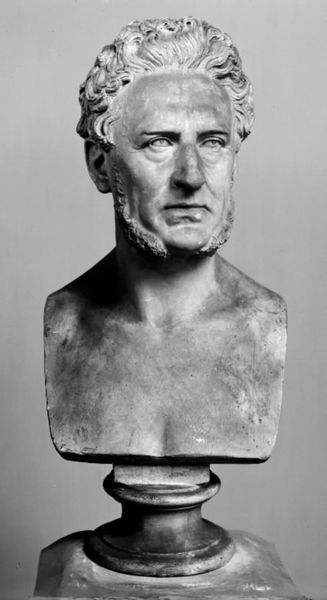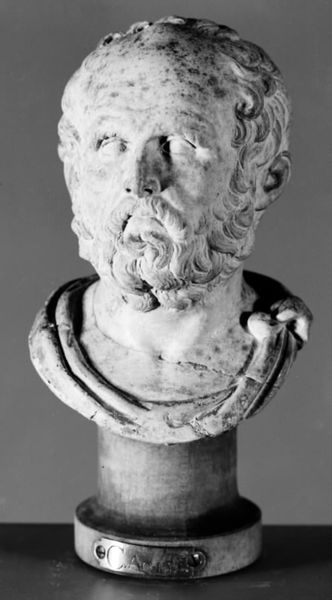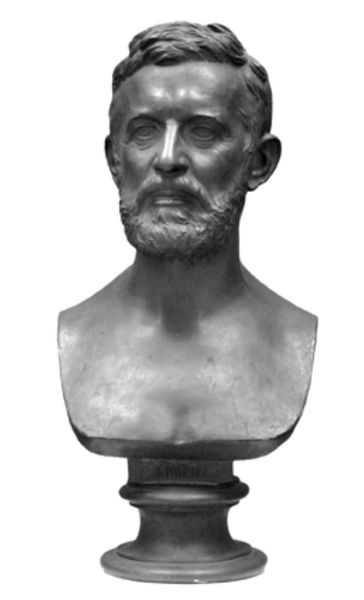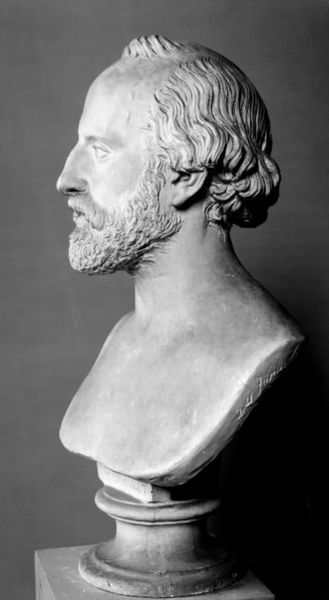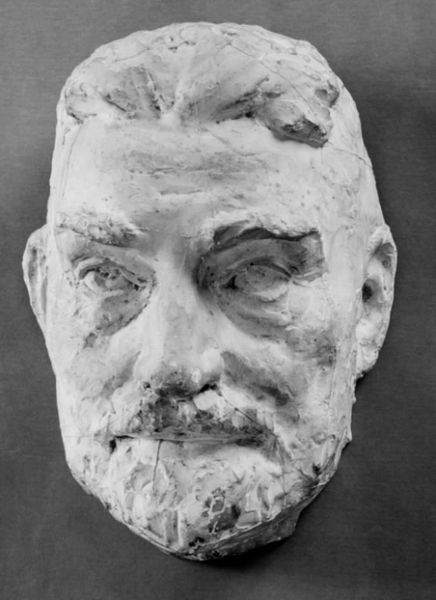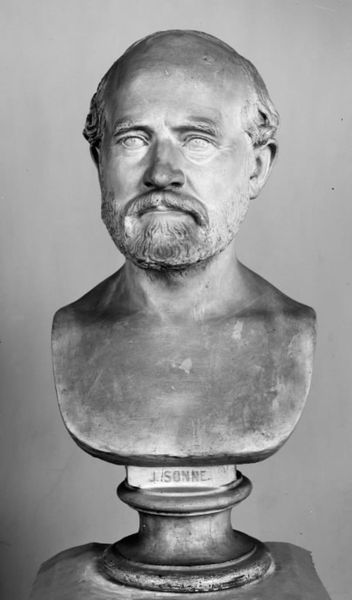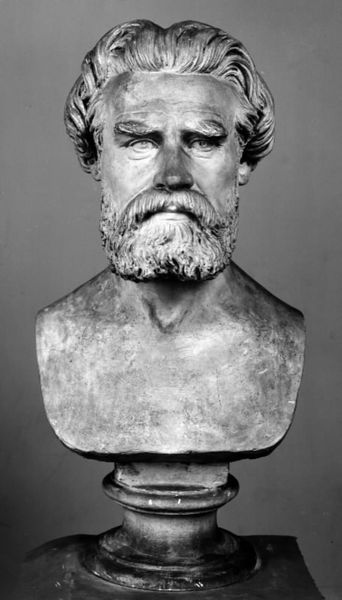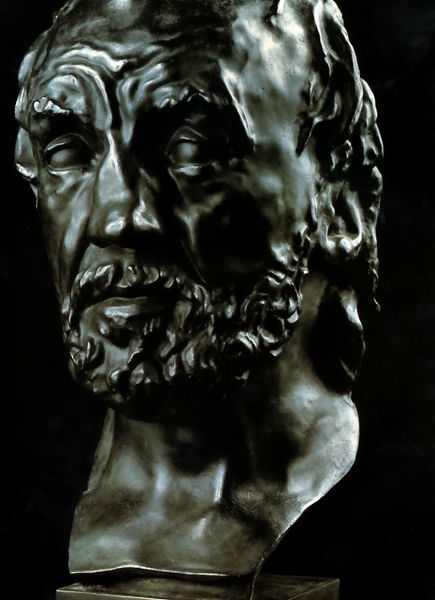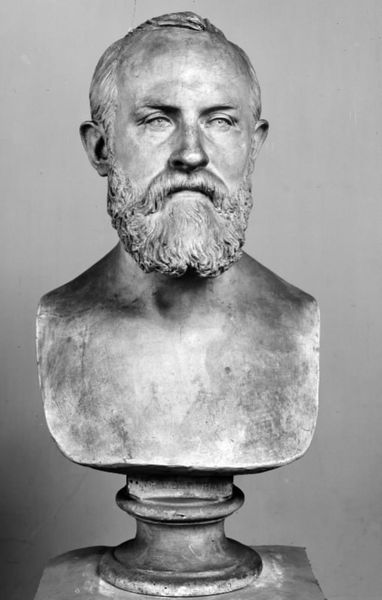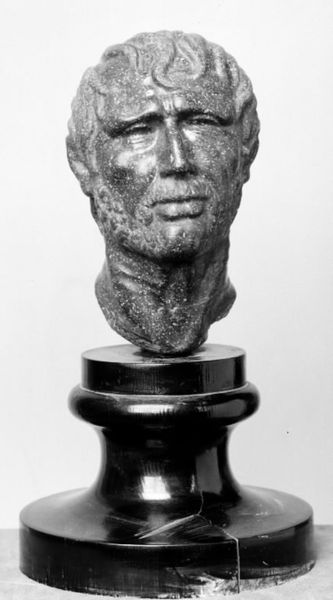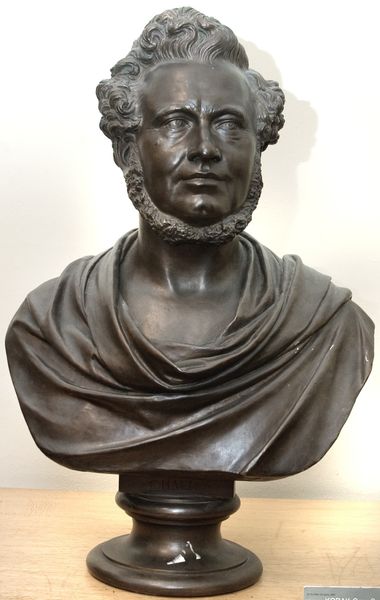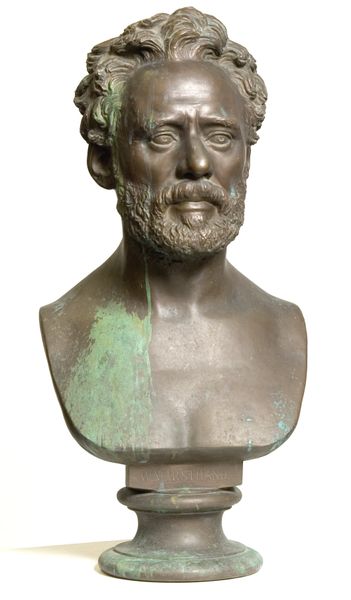
Mask of the Man with the Broken Nose (Masque de l'homme au nez cassé) 1864
0:00
0:00
Dimensions: Overall: 12 1/2 × 7 1/4 × 6 1/8 in. (31.8 × 18.4 × 15.6 cm)
Copyright: Public Domain
Auguste Rodin created this bronze mask of a broken-nosed man in France, sometime in the late 19th century. It encapsulates Rodin’s radical approach to sculpture, challenging the established norms of academic art. Rodin selected his subjects from the streets of Paris, rather than idealizing them. He captured the raw, unvarnished realities of everyday life. The broken nose is a deliberate rejection of classical beauty, where perfect form and idealized features were prized. Rodin’s work aligned with a broader shift in French society. Republican ideals promoted the value of the common person, and Rodin’s choice of subject matter reflects this move. The art institutions of the time, however, were much more conservative and Rodin initially struggled to gain recognition. Art historians often consult period newspapers and exhibition reviews to understand how Rodin’s sculptures were received by the public. The meaning of this work is thus contingent on its social and institutional context, as much as the intentions of the artist.
Comments
No comments
Be the first to comment and join the conversation on the ultimate creative platform.

